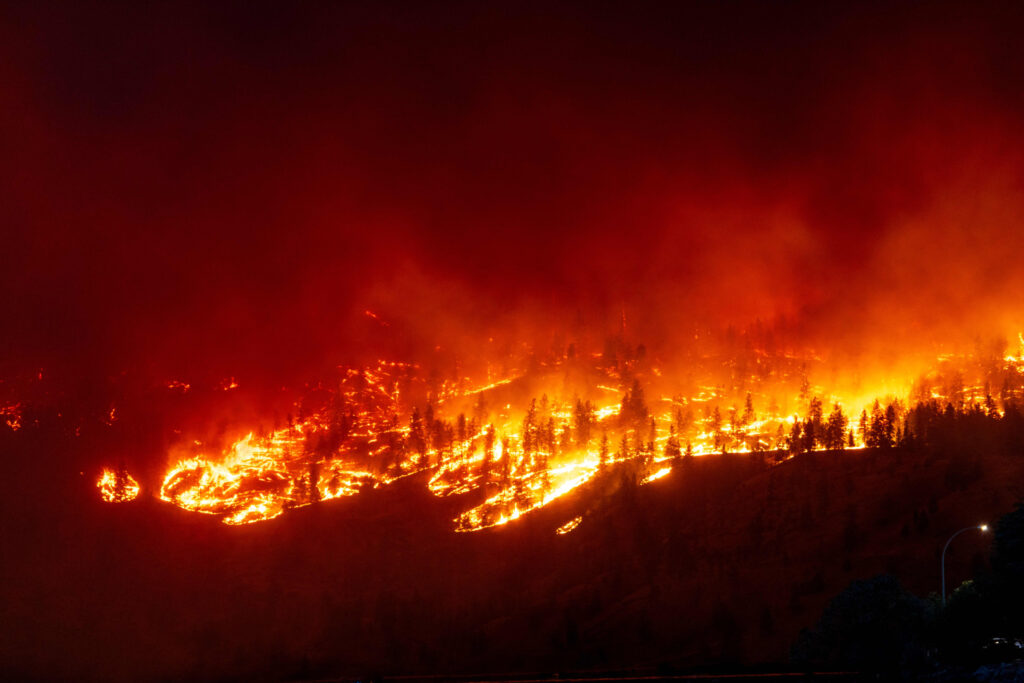Several states were experiencing ‘unhealthy’ levels of air pollution on Monday morning, according to data from the Environmental Protection Agency.
Smoke from wildfires in parts of the westernmost Canadian province of British Columbia, drifted south over the weekend, increasing levels of air pollution in states close to the U.S.’s northern neighbor.
Unhealthy levels of air pollution were recorded by the EPA in parts of Wisconsin and Minnesota, particularly around Minneapolis, where advice to residents was to reduce activity or stay indoors. Central and northwestern parts of the state measured 191 on the EPA’s Air Quality Index. Air quality is considered good if it measures between zero and 50.
The air quality in parts of northwest Michigan was designated unhealthy for sensitive groups, which includes older adults, children, and those with heart or lung disease.
Large swaths of Montana and North Dakota were also affected, and parts of Nebraska and Iowa also faced warnings.
The wildfire in British Columbia started on Friday and prompted the evacuation of thousands of residents in the town of Fort Nelson. It has burned around 20 square miles, according to British Columbia Wildfire Service.
“BC Wildfire Service and local fire crews are working around the clock right now to protect Fort Nelson and Fort Nelson First Nation,” the province’s premier David Eby said in a post on X, formerly Twitter.
The situation was “evolving rapidly” said British Columbia’s Minister of Emergency Management and Climate Readiness, Bowinn Ma.
Canadian Prime Minister Justin Trudeau was in West Kelowna, British Columbia on Friday, meeting local officials, and families who had lost their homes in a wildfire last summer.
“People are worried about what the summer might bring, people are worried about what the future might hold for themselves, for next generations,” he said at a press conference.
The McDougall Creek wildfire burns in the hills West Kelowna, British Columbia, Canada, on August 17, 2023. A fire in the province on Friday saw smoke drift south and affect air quality in some northern U.S. states.
Darren Hull/AFP via Getty Images
Air Quality Index (AQI) is a scale used by the EPA to measure air quality across America. It ranges from 0-500, with scores below a 50 rated as good and scores higher than 300 described as hazardous.
Moderate (51-100) is characterized as acceptable, although certain pollutants present in the air may pose health concerns for sensitive people.
Scores between 101-150 reflect levels of air pollution that could cause health issues for people who are particularly sensitive to airborne pollutants.
The unhealthy range on the AQI lies between 151-200. At these levels of pollution, everyone in the affected area may begin to experience adverse health effects.
AQI tracks and measures some of the most common air pollutants, including carbon monoxide, sulfur dioxide, nitrogen dioxide, ozone, and particulate matter.
The EPA warns that long-term exposure to fine particulate matter can trigger cardiovascular issues including heart attacks, strokes and even premature death.
Short-term exposure is also dangerous as it can impact normal lung function and exacerbate asthma.
Do you have a story we should be covering? Do you have any questions about the environment? Contact LiveNews@newsweek.com
Uncommon Knowledge
Newsweek is committed to challenging conventional wisdom and finding connections in the search for common ground.
Newsweek is committed to challenging conventional wisdom and finding connections in the search for common ground.
